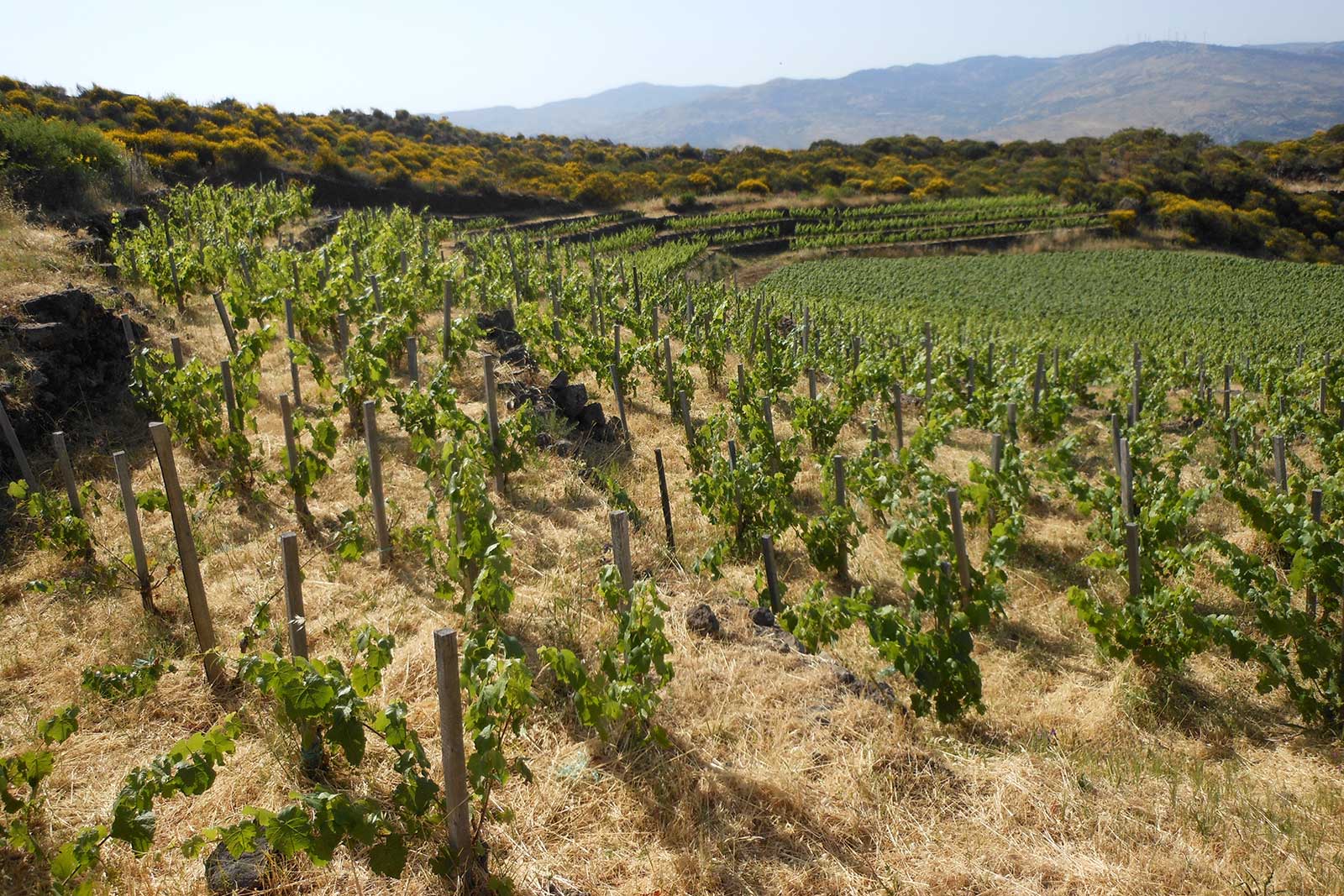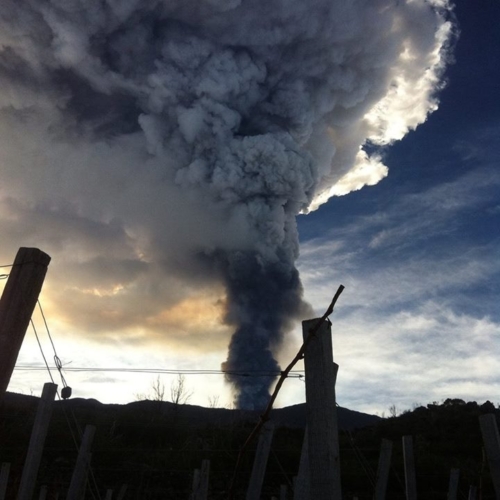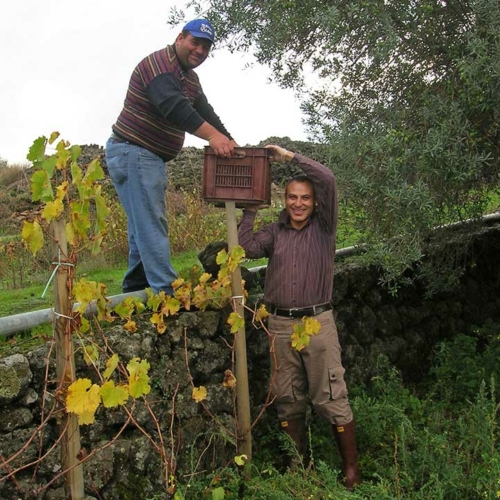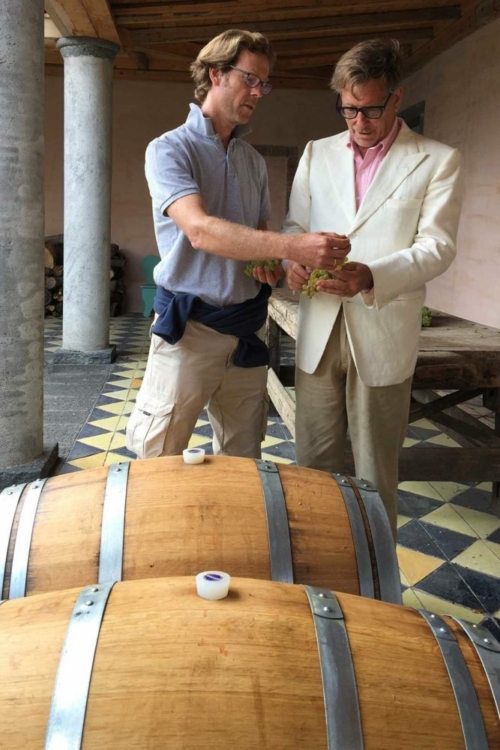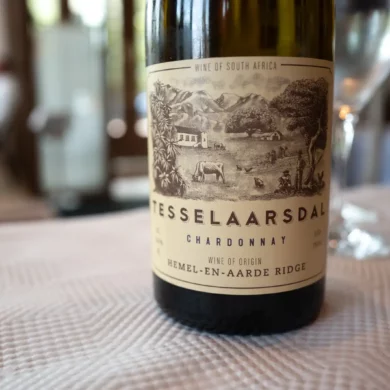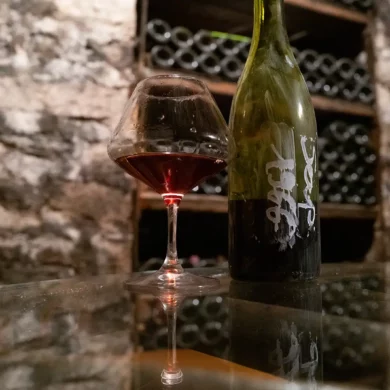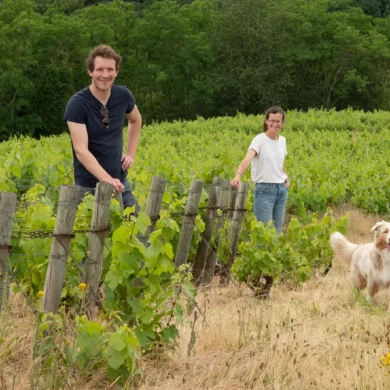On the northern slope of Sicily’s Mount Etna, winemaking has always carried an additional element of risk. You merely need to look at the landscape to see the evidence: black tongues of lava rock — the remains of periodic, unpredictable volcanic venting — lash nearly every fold of the land. For producers like Andrea and Carlo Franchetti of Passopisciaro, the next lava flows are not a question of if, but when: they could happen next week, or they could happen next century.
But in 2020, just being a small business in Italy is risky enough. When this vintage will be assessed years from now — at Passopisciaro on Etna, and really, all over the world — there will be something noticeably different. Forget heat waves, autumn rains and other vintage notes: this year will be defined by labor shortages and financial hardship.
In short: a vintage of scarcity.
A Very Tough Year Ahead
Carlo Franchetti is the younger cousin of winemaker Andrea Franchetti as well as the Vice President of Vini Franchetti, the parent company that includes Tenuta di Trinoro and Carlo’s Pinot Noir project, Sancaba, both in Tuscany. Andrea has long been the visionary, the fire-starter if you will, but he has stepped away from the spotlight, preferring to have Carlo be the voice of the winery.
The 2017 wines were as remarkable as ever — piercing in their concentration, and a bit furious in their demeanor. They don’t reach for Burgundy as much as they reach into the earth’s mantel for inspiration.
So it was Carlo who I connected with on a day in early April. On the docket, was a four-question interview to cover the four wines I had sampled from the 2017 vintage of their trailblazing Etna estate, Passopisciaro. I had long been a fan of these wines, but tasting the 2016 Contrada S last year was something else entirely, and made me realize how much I needed to understand Etna and its individual vineyards on a deeper level. The 2017 wines were as remarkable as ever — piercing in their concentration, and a bit furious in their demeanor. They don’t reach for Burgundy as much as they reach into the earth’s mantel for inspiration.
But when Carlo answered the call, I couldn’t help but start the conversation as every conversation these days must start: “how are you?”
“Things are very severe here,” he told me with a sigh. He was sequestered in the Tuscan countryside, which he admitted, wasn’t so bad. He could go outside and be in nature, but the restrictions on everything else were very tight. He also had not tasted the 2018 Passopisciaro wines (which had recently matured at the winery on Sicily) nor did it seem like he would any time soon.
“We’ve had to rethink the way we work and what we plan to produce,” he said with a trace of concern in his voice.
When COVID-19 shut Italy down in early March, its impact on the wine industry was immediate and brutal. Bud break had yet to occur, and already some winemakers were wondering if the whole year would be a loss. The disease and the resulting closures have since blown a sizable crater in the country’s already-fragile economy.
Who do we sell to if restaurants and bars stay closed? Which operations in the vineyard do we skip this year to save money? How do we ensure the safety of our vineyard and winery workers? Two months ago, these were questions few Italian winemakers thought they’d have to confront in 2020. The industry was riding high. Now, even the top estates like Passopisciaro are scrambling to make sense of the new reality.
“It is like a war situation,” he added, a common refrain regarding COVID-19 that is increasingly not just referencing the horrific scenes in hospitals, but increasingly, the devastation of small businesses. “It’s a question of survival … We are looking at everything.”
And Yet, 20 Years Ago …
This was slated to be a jubilant year at Passopisciaro. Twenty years ago, Andrea Franchetti visited the northern slope of Mount Etna to explore some ancient but neglected vineyards that a friend had told him about. Even though many of the vineyards were overgrown and rundown, he was enthralled by their potential. An advocate for bold, richly concentrated wines in the style of Bordeaux, his work until that point had been entirely with international varieties. But the ancient vines of Nerello Mascalese offered something else: concentration of character. Convinced of their potential, Andrea decided to establish a new winery on Etna’s slopes outside the town of Passopisciaro.
“He went around asking people on Etna, ‘where do the best wines come from?'” Carlo recalled. “The beauty of being the first [outsider] on Etna at the time was that he could cherry-pick what he thought were the best vineyards.”
He settled on specific plots in Contrada Sciaranuova, Contrada Porcaria, Contrada Rampante, Contrada Chiappemacine and Contrada Guardiola, where he would also purchase and renovate an existing winery building. Contrade are geographic subdivisions of Sicilian municipalities, but in the Etna DOC, they lend their name to wines of distinction in a similar fashion as the cru vineyards of Barolo. And like Barolo — and even more so, Burgundy — every detail of terroir is laid bare on Mount Etna’s contrade because of differences in elevation, weather exposure, slope and the age of the underlying soil, which has been generated at different intervals by hundreds of eruptions and lava flows.
Franchetti’s original intent was to blend the five parcels into a single red wine, and that was all Passopisciaro offered for a time. It took several years to find the right approach. Driven by his desire to emulate the brawny wines he liked best, Andrea Franchetti’s first few vintages emphasized extraction.
“If you get a chance to try the first four vintages of Passorosso [2001-2004], they’re pretty terrible,” Carlo Franchetti noted with a laugh. “Andrea wasn’t satisfied with those wines. They were still light, but with severe tannins. There was no balance.”
As often happens with Italy’s indigenous grape varieties, what worked for Cabernet Sauvignon or even Pinot Noir, didn’t apply to Nerello Mascalese. The grape’s delicate juice packs a tannic punch in part because of its small berry size. By 2005, Franchetti was modifying his approach to extraction — namely, avoiding it. Soon, Passorosso was garnering international attention and it became one of the pivotal wines in the renaissance of Etna winemaking. Then, in 2008, Franchetti decided to separate the plots into single-vineyard bottlings, and source Passorosso from Guardiola and new holdings in four other contrade scattered around the north slope of the mountain. Those wines continue to be a fascinating study in Etna’s vintage variation, and nuance of site.
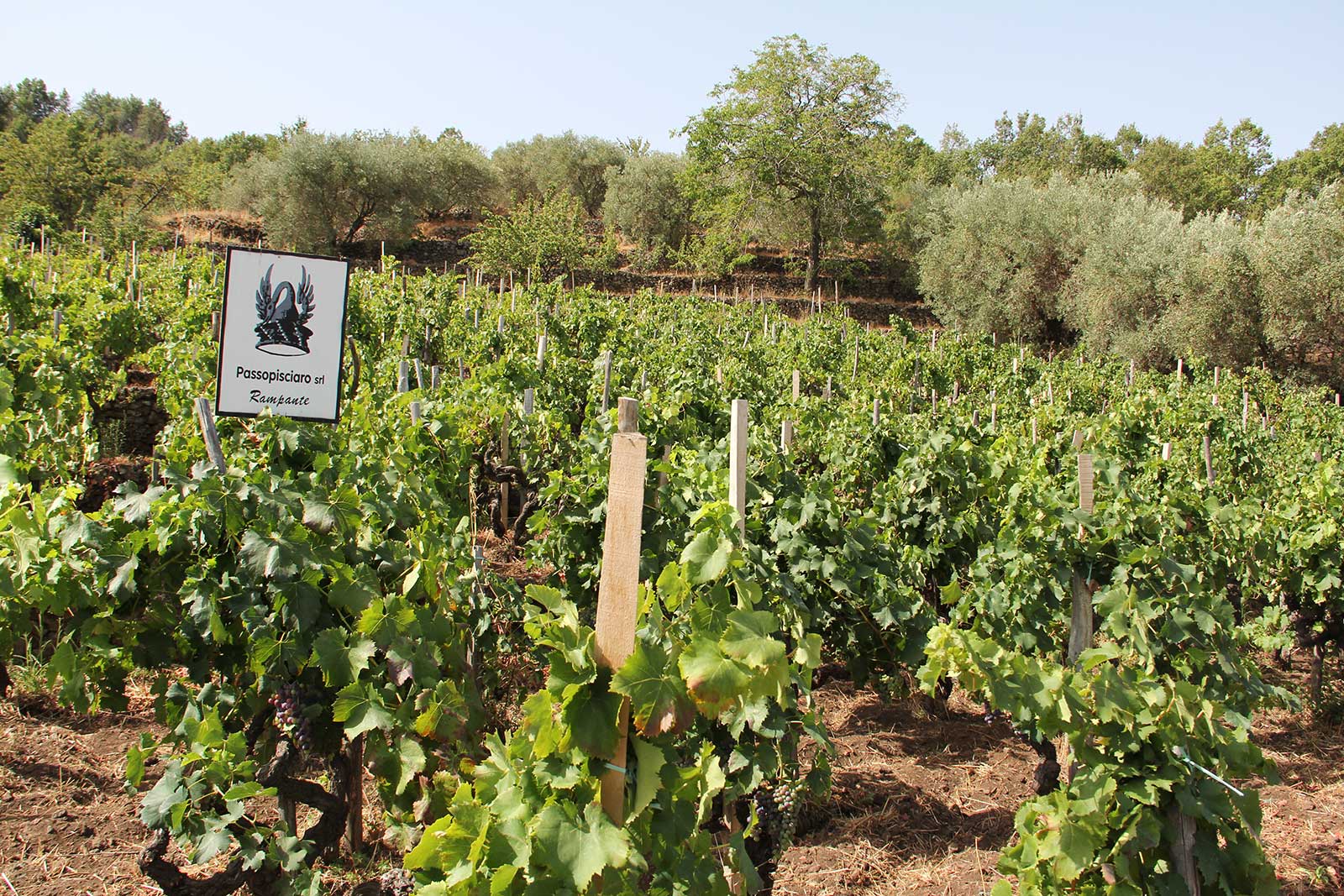
I asked Carlo if Andrea’s intention 20 years ago was to make modern wines from Mount Etna, or to create a renaissance of what Mount Etna’s wines once were. “Well, he went to Etna to make a completely different wine from Nerello Mascalese,” he answered. “But he found out that he couldn’t make it. He made [the lightly extracted Passorosso] out of necessity, not out of choice.”
It was a shrewd decision, as it undeniably contributed to the gold rush effect that has happened on Etna. In recent years, producers and investors from across Italy and around the world have bought up Etna’s vineyard land, hoping to add an “Italian Burgundy” to their portfolio. I see it frequently in my inbox: press releases from major wineries announcing their “new venture” on Etna. Separating the authentic from the opportunistic requires quite a bit of digging (and will likely yield a First-Taste Guide later this year). But Carlo is pragmatic about the effects of Etna’s renaissance.
“It has rightly put Etna on the world map, and the quality of winemaking has improved dramatically,” he told me. Furthermore, “everyone is in the game to try and outdo each other and make the best wine. So it has been an incredibly positive thing and will continue to be.”
Tasting Impressions and Interview
Because Passopisciaro’s holdings in Contrada Rampante and Contrada Chiappemacine are above and below the elevation line that serves as the Etna DOC boundary, the winery cannot claim Etna DOC status for those wines, nor can they use the contrada name. Since 2008, when the estate’s single-contrada wines were introduced, the work-around has been to call these single-cru wines by letter and to classify all of the wines under the broader Terre Siciliane IGT. But to wine drinkers, the distinction is bureaucratic only — these are Etna Rosso wines.
2017 Passopisciaro Passorosso
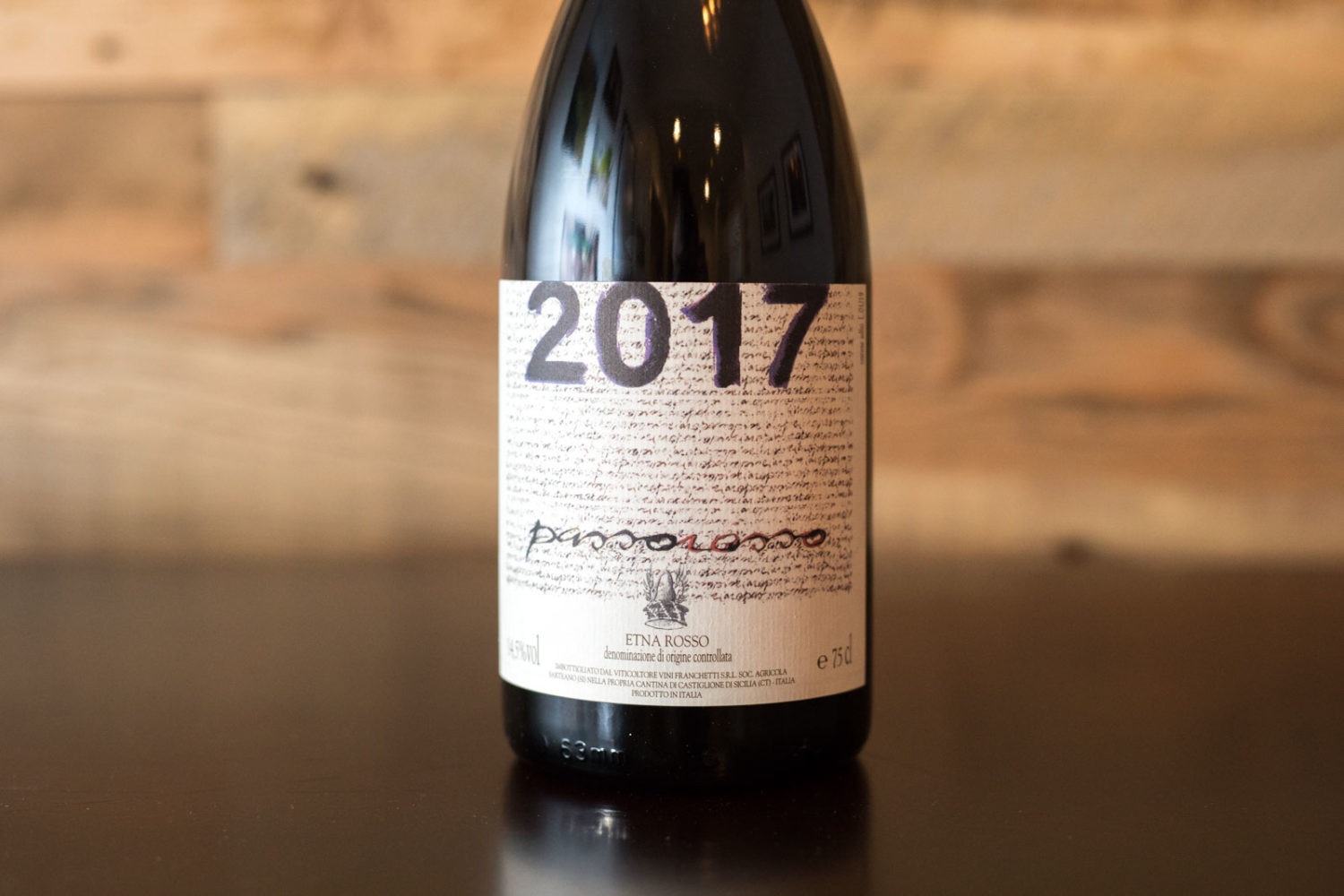
Kevin Day: What is the blending philosophy behind the Passorosso?
Carlo Franchetti: What we are looking for in the Passorosso is a holistic expression of Etna. You have to remember that up until 2007, Passorosso was the only wine. Then in 2008, we introduced the contrada wines, but Passorosso has always been a blend of terroirs. That was very deliberate because he wanted to get as much complexity as possible in the wine, and the complexity was given by all these different terroirs.
Kevin Day: So do the percentages from each vineyard change from year to year depending on conditions?
Carlo Franchetti: Not really. No Porcaria goes into the Passorosso because it is such a small vineyard, we need all of it for Contrada P. No Rampante goes into the Passorosso, no Sciaranuova, no Chiappemacine … we need them for the Contrada [wines]. The exception is Guardiola because it is a big vineyard. So about 40% of Passorosso is made from Guardiola, and what little we have in Guardiola — the top of the top — that goes into the Contrada G. [For the rest of it], we always work with the same suppliers because we want to ensure continuity. So that 60% comes from Contrada Malpasso, Santo Spirito, Favazza and Arcuria.
Terre Siciliane IGT (Sicily)
Grapes: Nerello Mascalese (100%)
Alcohol: 14.5%
Ratings: ★★★★ 3/4 (out of five)
• Food-friendliness: Versatile
Value: Very good
Review: While not yet as complex as previous vintages I have tasted, the 2017 Passorosso still carries that remarkable zing and verve that make it a perfect stepping stone for newcomers to Etna. Lightly red and almost translucent in the glass, the similarities to Burgundy, on sight alone, are noticeable. Fruity aromas suggest blackberries and red currents, and of the wines I sampled from 2017, this one seems to carry the ashy/smoky note of volcanic soil the most. The similarities to Burgundy end with the tannins: Nerello Mascalese shows its brass knuckles on the finish, with walloping tannins that linger and linger. An impressive “entry-level” wine.
2017 Passopisciaro “Contrada C” Terre Siciliane
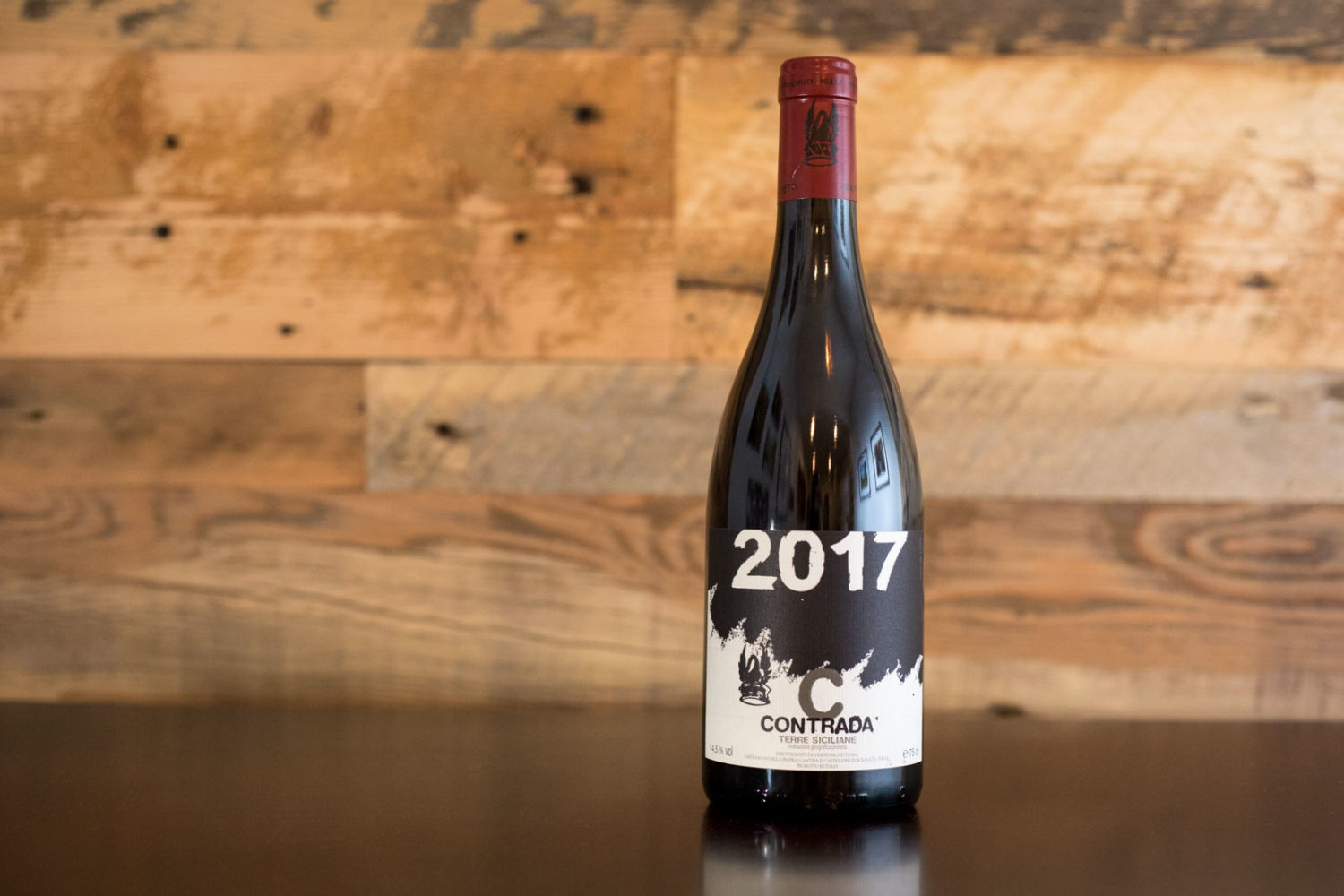
Kevin Day: Can you describe the vineyard in Chiappemacine and what makes it unique among the Contrada wines?
Carlo Franchetti: Chiappemacine is at the lowest elevation of our vineyards on Etna. It is a series of terraces, but they are fairly big and broad terraces — big enough that we can go in with a motozappa to plow.
Kevin Day: Are the terraces primarily to separate land or make labor easier?
Carlo Franchetti: The terraces are all existing. It’s nothing we built. I think they were initially built to make the land flatter and easier to work on. But also on Etna, they had to dig out a lot of volcanic rock to plant these vineyards, and what do you do with the stone? You build walls.
Terre Siciliane IGT (Sicily)
Grapes: Nerello Mascalese (100%)
Alcohol: 14.5%
Ratings: ★★★★ 3/4 ( out of five)
• Food-friendliness: Versatile
Value: As Expected
Review: Chiappemacine is lower on the volcano where the strata of lava is thinner on the top. This allows the vines to enter into Sicilian limestone underneath, yielding wines with a plusher texture and, even in a hot vintages, surprising grace and beauty. In this vintage, they had to take the unprecedented step of watering the vines a bit to help them survive the September heat. Despite these conditions, the 2017 Contrada C is wonderfully balanced. The nose is suggestive of plums and blueberries, as well as blue flowers, grass and tobacco leaf. Richly fruity on the palate, yet rewardingly lean and precise, too. This is a class A example of why people geek out over volcanic wines: the acidity has an unstoppable momentum that encourages one sip, then another, then another. This wine takes a while to open up. I suggest drinking it over a couple of nights for the most rewards.
2017 Passopisciaro “Contrada R” Terre Siciliane

Kevin Day: Which contrada offers the most challenging conditions for you in terms of winemaking?
Carlo Franchetti: Definitely the Rampante (Contrada R) because it is the highest vineyard, it always ripens very late — some times as late as early November. We’ve even harvested Rampante when we’ve had snow falling around us. We were looking for the perfect maturity and it had started to snow. Obviously, the longer you wait the greater the risk because the weather starts changing and conditions get difficult and the skins get very thin.
But also the lay of the vineyard. It’s all on these tiny, little terraces. There is no mechanization. It has to be done entirely by hand, even the treatments.
Kevin Day: Do you have any erosion problems at Rampante? Do the walls have to be rebuilt after significant rains?
Carlo Franchetti: No, not really. They were pretty good at building walls back in the old days (laughs). I think they had a lot of time to spare and they built things to last. But we do get a lot of earthquakes because of the volcano. So occasionally we have to repair the walls, but its nothing major.
Terre Siciliane IGT (Sicily)
Grapes: Nerello Mascalese (100%)
Alcohol: 15%
Ratings: ★★★★ 3/4 (out of five)
• Food-friendliness: Versatile
Value: As Expected
Review: A dramatically different wine from Contrada C, the Contrada R comes from the highest elevation. While one would assume that means cooler (it does) and more lean and linear, it does not. Franchetti uses the high elevation to encourage a longer maturation and hangtime for the grapes, which yields more concentration and — in a hot vintage like 2017 — more alcohol. Aromas are strongly suggestive of black raspberry and roses, and here, the ashy/smoky tones of Etna come across faintly like the aromas of roasted coffee beans. There is a wonderful maturity to this wine that speaks to the ancient vines on the site. There is just so much character. In my notes, I wrote “tannins have more grip than a pair of hiking boots.” Proceed with caution if you are a lightweight, but this vintage from Contrada R is compelling.
2017 Passopisciaro Passobianco
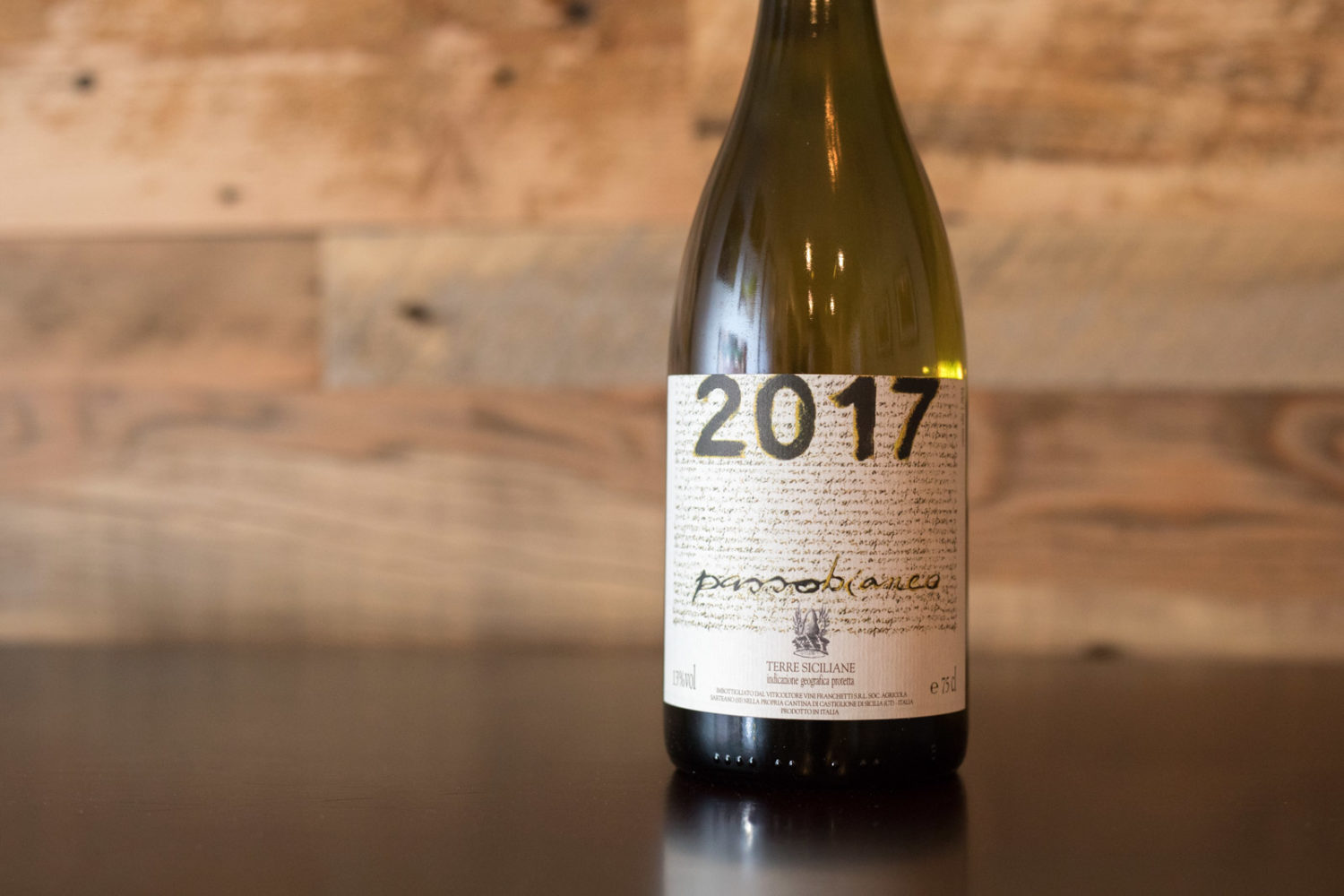
Kevin Day: The Passobianco is unusual in that it’s a volcanic Chardonnay, rather than being made from Etna’s indigenous variety, Carricante. Why did Andrea plant Chardonnay for this wine?
Carlo Franchetti: Andrea has always been a fan of French grapes. Of course, Nerello Mascalese is an exception because of the old vines, but the idea of Chardonnay on Etna was that it is his favorite white grape, but he also thought he could make something very special that would reflect the unique terroir. Our intention is to make a Chablis-style Chardonnay — something lean and mineral and not too oaky. Of course, it is a different minerality because it is volcanic and not from a seabed.
The 2017 is particularly robust and a little misleading. It was a monstrously warm vintage. We had to harvest our Chardonnay in early August, a month ahead of when we normally harvest our Chardonnay. I would say that 2016 was much more representative of the finesse and tension of this wine.
Terre Siciliane IGT (Sicily)
Grapes: Chardonnay (100%)
Alcohol: 13%
Ratings: ★★★★ (out of five)
• Food-friendliness: Selective
Value: As Expected
Review: Aromas are suggestive of golden apple, hay, lime zest and beeswax. The fruit is quite tart, and the acidity cuts through the palate with aggression in a way I’ve rarely encountered in Chardonnay. Where the wine provides some excitement is in the mineral notes that seem to be salty. A wine that needs a little more time in bottle in my opinion, but a vintage that is not fully indicative of Passobianco.
Note: Wines featured in this article were provided as samples by the winery and their Colorado-based importer, Giuliana Imports. Learn more about my editorial policy.
Find These Wines in Colorado
Are you a wine lover based in Colorado? Me, too. If you are interested in Passopisciaro’s wines, the following retailers are currently carrying their wines and offering safe-shopping options during the COVID-19 lockdown.
Proof Wine & Spirits – 3360 Larimer St, Denver, CO 80205, Denver, CO • 720-425-2959
Mondo Vino – 3601 W 32nd Ave, Denver, CO 80211 • 303-458-3858
Davidson Liquors – 5555 Boatworks Dr, Highlands Ranch, CO 80126 • 303-224-0444
Hazel’s Beverage World – 1955 28th St, Boulder, CO 80301 • 303-477-1955
Boulder Wine Merchant – 2690 Boardway, Boulder, CO 80304 • 303-443-6761
Sovereignty Wines – 1785 S. 8th St., B, Colorado Springs, CO 80905 • 719-389-0906
Coaltrain Fine Wine – 330 W Uintah St, Colorado Springs, CO 80905 • 719-475-9700
Aspen Wine & Spirits – 300 Puppy Smith St., Aspen, CO 81611 • 970-925-6600
Of Grape & Grain – 111 S Monarch St, Aspen, CO 81611 • 970-925-8600
Furthermore, if you are interested in private virtual tastings, or Colorado-based wine events I’ll be conducting after the COVID-19 pandemic, contact me or signup for my newsletter by filling in the form below and checking “Interested in educational wine tastings in Colorado.”

